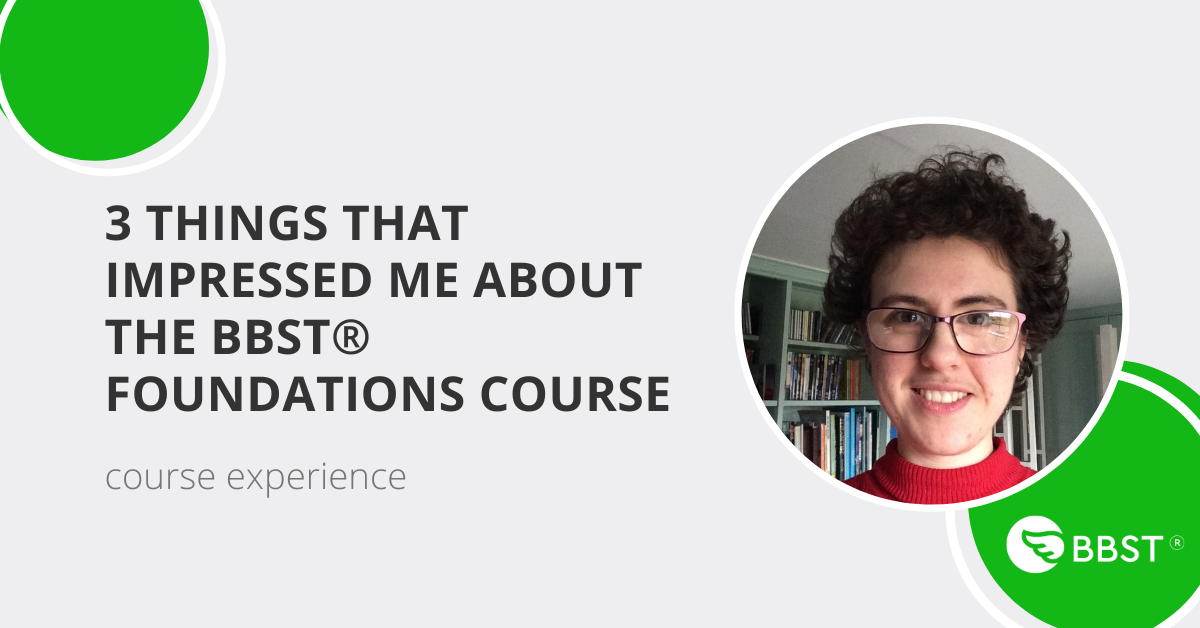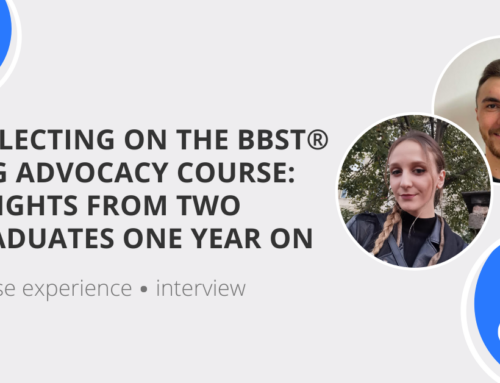From the start of my research about the BBST® Foundations course, I could tell it was right for me. Both as a tester and as a learner, I enjoy exploring new ideas in depth and asking questions out of curiosity and a desire to understand, rather than simply to pass a test. I get frustrated by courses that stick to a rigid, unquestionable syllabus and treat learning like a tickbox exercise. The BBST® course is the complete opposite. I could tell that the people who designed the course take learning seriously because they even shared the theory they based it on: bbst.courses/bbst-learning-objectives/
Here are some things that particularly impressed me.
Acknowledgement of difference
Even though software testing is a relatively new profession, a huge amount of variety has emerged in the way people think about and do testing. Some testers meticulously plan and document test cases, while others take a loosely structured exploratory approach, or focus on an automation strategy to reduce the amount of manual testing they do. Every statement about how testing should be done has its opposition, to the extent that people disagree on even the definition of testing.
Faced with this chaos, it is tempting for a course to try to impose order by establishing a single approach as the ‘proper’ way to do testing. However, this falls apart once students try to apply what they have learnt. Some will be working in situations where the taught approach is not suitable – for example, trying to document all test cases in a fast-moving industry where requirements keep changing may not be feasible. When they try to talk to other testers, reliance on specific definitions of terms may lead to miscommunications. More subtly, the smugness of having already learnt the ‘best’ way to test leads to a rigid perspective and a lack of desire to learn more and improve. Testing is a creative process whose whole purpose is to break through the boundaries other people have assumed are there, so imposing strict rules and uniform definitions is neither desirable nor possible.
” When the course advocates a certain viewpoint […] it relies on extensive reasoning rather than just telling students what opinions to have. “
The BBST® course is upfront about acknowledging the diversity of the testing profession, and about not wanting to stifle opposing viewpoints. The testing concepts such as oracles are introduced with some historical context explaining the motivation for them, and students are encouraged to think about when they are appropriate and why. When the course advocates a certain viewpoint, in particular in the lesson on measuring testing, it relies on extensive reasoning rather than just telling students what opinions to have. While it does teach some definitions, it introduces them as ‘working definitions’ for the purpose of clearer communication within the course that you may disagree with or use differently in other situations. This is a good approach to take outside of the course too. By clarifying meanings and not worrying so much about which terms are used – as long as everyone in the conversation is on the same page – we can avoid a lot of confusion and wasted time.
The exposure to people and perspectives
Testing is a profession where it is vital to keep innovating and improving, partly because technology changes constantly, but also because bugs accumulate where we don’t look. There is no handbook or complete list of what and how to test because of the diversity and infinite possibilities of what we are testing. In this situation, where we need to keep coming up with new techniques and ideas, it is important and useful to learn from the experience of others.
There are quite a few testers working at the same company as me, but many (like me) were new to testing when first employed there. While we each bring a different perspective from our backgrounds before testing, there are only so many of us and it would be easy for our collective pool of testing ideas to become stagnant and lose effectiveness.
The course was excellent at introducing me to different people. The other students were from around the world, worked in different kinds of teams, and with different roles – there was even a business analyst with an interest in testing. The course structure ensures you interact with other students via discussing the course material, but we were also encouraged to introduce ourselves as people and share our hobbies. Additionally, the course involves reading specific articles, papers, and blog posts that relate to and expand on the content of the lectures. I found it very valuable to read these because they encapsulated experiences from testers working in completely different sectors, giving me a wider perspective, and summarised aspects of testing which I could learn from and pass on. As an academically-minded person, I was also heartened by the fact that these articles exist and that there are so many people out there who also like to think deeply about the theoretical side of testing.
I have already started sharing these new concepts and techniques with the testers I work with. It’s like a new waterfall running into our pool, bringing fresh ideas and revitalising what we already know.
The course structure helps you learn
Structured learning isn’t always easy, and often ends up being boring or ineffective. Sitting in a room listening to an instructor drone on without interaction won’t help you engage with the material, and answering a multiple choice exam doesn’t really test your understanding. A lot of courses are designed to be easy to deliver and examine but aren’t valuable to engage with as a student – you may be able to pass the tests easily without really learning or improving, or meaningful study may take a lot of work (and enthusiasm) outside of the structure provided.
” The BBST® course doesn’t ask students to work harder, but to work smarter. “
The BBST® course doesn’t ask students to work harder, but to work smarter. It is structured in a way that I would describe as ‘streamlined’ towards learning, based on psychological theories about how we learn, so that students are directed towards effective learning without excessive effort. For example, we are much more receptive to new information if we know why it is important, so before each lesson, there is an ‘orientation exercise’ which prompts students to think about the problem that the lesson addresses. This naturally sparks curiosity, and made me more eager to watch the video lectures than if I only knew the title in advance. The quiz that went alongside each lecture was a good self-check that I had understood it before any misunderstandings settled into my memory.
If multiple choice exams are ineffective because they test for short-term memorisation of surface-level knowledge under time pressure, and can often be guessed at without knowing the material, then the exam at the end of the course was the complete opposite. Its structure mimics real aspects of testing like attention to detail and communication, making it more holistic than just testing the knowledge from the course, and the preparation for it is yet another part of the learning process. The questions ask you to think about the concepts from the course material and describe how they can be applied in different situations, which naturally leads to forming long-term memories and being able to use the course material to become better testers after the course ends.
Unless you are looking to take part in a testing course purely to go through the motions and tick a box – if you actually want to improve and learn – then I recommend a course like this that is fundamentally designed to be engaging and effective.
Discussions
Share your take on the subject or leave your questions below.





